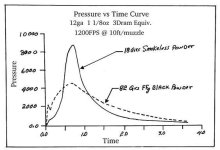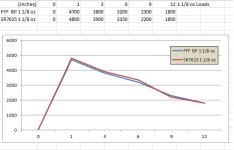Jcon72
Member
I know these old guns aren't highly collectible (nor particularly high on my personal wish list), but according to the SCSW the .32 New Departure 1st model was "scarce" in a blue finish and I'm curious as to what exactly that means in relation to these guns and how it affects their value.
A local gun shop has this 3" model that I've committed to buying and should be picking it up later this week. It seems to be in pretty good condition for its age, including the grips that so often are chipped/cracked/broken. This was somewhat of an impulse purchase not only because it is a blue one but also because I was able to get it for what seemed to be a pretty reasonable price. You might say it's one of those "just because" purchases.
Unfortunately I won't have better quality pictures to post until later in the week when it comes home, but I was wanting some educated input from those of you who are much more knowledgeable than me on these oldies. In order to keep people's opinions as objective as possible I won't yet disclose just how much I paid.
So what do ya'll think? Honest opinions, please!
Also, the serial number is 65xxx. The closest I can estimate is that its birth date would likely be somewhere around 1896-1898; does that sound about right?




A local gun shop has this 3" model that I've committed to buying and should be picking it up later this week. It seems to be in pretty good condition for its age, including the grips that so often are chipped/cracked/broken. This was somewhat of an impulse purchase not only because it is a blue one but also because I was able to get it for what seemed to be a pretty reasonable price. You might say it's one of those "just because" purchases.
Unfortunately I won't have better quality pictures to post until later in the week when it comes home, but I was wanting some educated input from those of you who are much more knowledgeable than me on these oldies. In order to keep people's opinions as objective as possible I won't yet disclose just how much I paid.
So what do ya'll think? Honest opinions, please!
Also, the serial number is 65xxx. The closest I can estimate is that its birth date would likely be somewhere around 1896-1898; does that sound about right?








